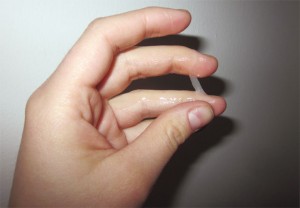In most cases, the amount of mucus produced by the cervix increases after implantation, which is usually assumed as an early sign of pregnancy. This is mainly because the body is undergoing massive changes to accommodate the pregnancy. The increased production of cervical mucus may be attributed to the increased flow of blood to the vagina and hormonal changes in the body after implantation. Throughout this article these changes in the amount of cervical mucus after the implantation will be discussed.

What Does Cervical Mucus After Implantation Look Like?
The cervical mucus after the implantation may contain some blood caused by implantation, which make the cervical mucus look like pinkish or brownish in color. And, you will also experience an apparent increase of cervical mucus after the implantation. But conditions may vary from woman to woman.
Changes on Cervical Mucus After Implantation
After fertilization, the fertilized ovum attaches itself to the inner uterine wall, referred to as the endometrium, during a process known as implantation. After implantation, the reproductive organs inside a woman undergo various changes. Such changes are triggered by hormonal changes in the body; after implantation, progesterone starts regulating the endocrine system in the body. The increased level of progesteroneafter implantation triggers the swelling of the cervix and increases the flow of blood to the cervix. Additionally, this pregnancy hormone makes the glands on the cervix enlarged and stimulates the gland to secrete more cervical mucus.
A few days after implantation, the pharynx is clogged by a thick layer of mucus in order to protect the developing fetus. Owing to the hormonal changes in the body during the first trimester, the amount of vaginal fluid discharge may increase, but the amount of cervical mucus discharged will be minimal and thick. During this time, you should be concerned about vaginal infections. The following are the common symptoms of infection during the first trimester:
- Unpleasant smell emanating from the vagina
- Yellow, green or dim-grey colored vaginal discharge
- Vaginal secretions that are accompanied by an itching sensation
- Presence of blood stains in the discharge
If you notice any of these symptoms during your pregnancy, you should seek medial attention because they may be indicators of a vaginal infection. Normal vaginal discharge should be white or transparent, not smelly with regular and normal consistency. However, you should observe proper hygiene during pregnancy to avoid infections.
What Does Cervical Mucus Type Say About Pregnancy?
If you cannot figure out if you are experiencing cervical mucus after implantation, you can know something based on the cervical types. The increased level of estrogen hormone in the body affects the color, appearance, consistency, fertility level and regularity of cervical mucus. Mentioned here are types of cervical mucus and their implication about your pregnancy.
1. Non-Fertile Mucus
Three to five days after menstruation, the majority of women will discharge minimal or no cervical mucus. If you test this mucus in between your fingers, it will dry out. This typeof mucus is unproductive in nature.
After the fifth day, the mucus will become more stick and appear gummy. This type of cervical mucus may be pink or white in color, which is also unproductive in nature. And this gluey mucus is produced for two to three days.
2. Fertile Cervical Mucus
Lasting for two to four days, the cervix will produce buttery, creamy, stringy, milky, rich and milky cervical mucus that appears like lotion. This type of mucus gives the vaginal region a wet feeling and is fertile in nature.
Another type of fertile cervical mucus is the one that is egg-white in appearance. The appearance of this type of cervical mucus indicates a very fertile phase in a reproductive cycle and lasts for about five days. This type of mucus is slippery and will extend up to 10 inches if pulled in between two fingertips.
After the egg-white mucus, the cervix will produce soggy, dry and sticky mucus. The appearance of this mucus indicates the transition to an infertile phase. The production of this type of cervical mucus is because of the dropping level of progesterone and estrogen hormones after ovulation.
How to Check Your Cervical Mucus
Constantly monitoring the changes in your cervical mucus after implantation can help with your conception by figuring out the most productive phase in a cycle. If you would like to monitor your vaginal discharge or cervical mucus, it is highly advisable that you start from the first day of your period, and inspect the mucus a couple of times in a day. Also, you need to observe the overall vaginal feeling, ranging from wet to dry. During the fertile days, the consistency, color and appearance of cervical mucus are changing to create conducive environment for the sperms and to facilitate their swimming.
To monitor the changes in your cervical mucus throughout your menstrual cycle, you should wash your fingers thoroughly and dry them well, then insert the clean fingers into the vagina, and pull the fingers out and observe the mucus sample.
If you are uncomfortable with inserting your fingers into your vagina, you may wipe it with a tissue paper to attract the mucus to the surface and then collect a sample. However, this method is not that useful as it will only allow you to observe the color of the mucus, but not its consistency. Alternatively, you may use Kegel exercises to force the cervical mucus out. You can then collect a sample and examine it.
